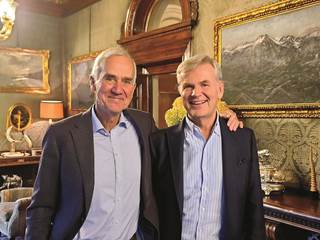Shotgunning: The Beretta Story
The legendary Italian gun maker has been producing high-quality firearms for nearly 500 years
The legendary Italian gun maker has been producing high-quality firearms for nearly 500 years

In 1526, the Venetian senate ordered 185 arquebus barrels from Maestro Bartolomeo Beretta of Gardone, a city in the iron-rich Val Trompia in northern Italy. That order marked the founding of the company that would become known as Fabbrica d'Armi Pietro Beretta, which today is the oldest manufacturer of any kind in the world. Over the centuries, Beretta's output grew to include military and civilian firearms of all kinds, including, of course, world-renowned shotguns.
By medieval custom, only a maestro's son could become a maestro. Bartolomeo's son, Jacopo, became a maestro, as did Bartolomeo's grandsons, Giovannino and Lodovico, and the sons and grandsons who followed. The Berettas supplied military arms to Italy, France, and Austria for centuries, but demand declined in the 19th century. Pietro Antonio Beretta, born in 1791, recognized that future success meant diversifying into civilian and sporting arms. He worked to build a network of dealers and retailers through the first half of the 19th century. His son, Giuseppe, continued his father's work while also transforming a company best known for manufacturing barrels and locks into a complete gun maker.
After focusing on military weapons during World War I, Beretta resumed civilian gun production. In 1935 the company created one of the world's great shotguns-the Sovrapposti. It was the company's first over/under gun and, like Browning's Superposed, it was designed to be more cost-effective than handmade British shotguns. Nevertheless, Beretta introduced it as a high-end sidelock gun, establishing the company as a premium maker of over/under shotguns. World War II interrupted production of the Sovrapposti, and Allied bombing raids on the factory forced Beretta to move machinery into caves in the Val Trompia.
After the war, production of civilian shotguns resumed. The S series of over/unders was introduced in 1955, starting with the S55. These affordable shotguns had interchangeable parts that required little fitting and could be blued prior to assembly. The extremely durable boxlock guns had a low, sleek profile that made them natural pointers, and they evolved to become the 680s, 690s, and Silver Pigeon shotguns that are well-known to American hunters and shooters today.
The competition-based 682E differs only slightly from a standard 686 or 687 hunting or target gun, yet it has won Olympic medals despite selling for half the price of most high-end target guns. Beretta's top-of-the-line target guns, the DT10 and 11, have also compiled impressive records of Olympic success.
The first Beretta semiauto shotgun, the Model 60, appeared in 1955. The Model 60 and 61 that followed had some reliability problems, but their successors in the 300 series, starting with the Model 300 in 1965, earned a reputation for reliability, and today they are the predominant gas guns in sporting clays competition and at high-volume dove lodges in Argentina. That reputation continues with the A400, prized by waterfowlers in the Xtreme 3 1/2-inch 12-gauge configuration for its ruggedness, soft-shooting gas system, and Kick-Off recoil reducer.
After working with various importers, Beretta established Beretta USA in 1977 to handle distribution in the United States. In the 1980s, the company moved some production to the States as well. The bulk of shotgun manufacturing still takes place in Gardone, in two large, adjacent plants that pair innovation and tradition. Beretta Uno is an ultra-modern facility where robots and machines work to tolerances beyond the ability of human hands. Beretta Due houses artisans who file, fit, shape, and checker fine guns the old-fashioned way.
Although the Val Trompia is home to dozens of gun manufacturers, Beretta is still in the hands of the Beretta family, and it has grown to account for half of the region's total firearms production. As the company nears its 500th birthday, it shows no sign of relinquishing its place at the top of the gun-making world.

Wetlands America Trust Trustee Skipper Dickson (left) met recently with Beretta President and CEO Franco Beretta at the companys headquarters in Gardone Val Trompia, Italy.
Photo © Beretta
Ducks Unlimited uses cookies to enhance your browsing experience, optimize site functionality, analyze traffic, and deliver personalized advertising through third parties. By continuing to use this site, you agree to our use of cookies. View Privacy Policy